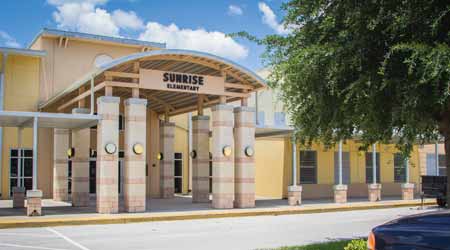 Managers used the results of facility condition assessments to develop capital improvement projects — including HVAC system upgrades — designed to improve conditions in schools.
Managers used the results of facility condition assessments to develop capital improvement projects — including HVAC system upgrades — designed to improve conditions in schools.Deferred Maintenance: School District Attacks the Backlog
The School District of Osceola County develops a successful plan of attack on deferred maintenance in its facilities
“Enough was enough.”
With that declaration in 2014, Shane Acree and his team at the School District of Osceola County, Fla., decided they needed to take decisive action on deferred maintenance in the district’s schools.
“Our aged systems were starting to fail beyond the point of repair, urgent work orders were piling up, and facilities overall appearances were deteriorating,” says Acree, the district’s energy manager. “With aging facilities some over 40 years old, we are faced with many challenges and limited capital funding to (handle) these challenges.”
The result of their efforts was a facility condition assessment process and capital improvement program that addressed specific HVAC needs in schools, streamlined department performance, and tackled a deferred maintenance problem that threatened learning environments.
The challenge
The rapidly growing district in central Florida consists of 47 schools — 24 elementary schools, eight middle schools, eight high schools, four multi-level schools, and two adult education schools — with an enrollment of 67,000 students. The district’s maintenance department is responsible for 8.8 million square feet in facilities that were built between 1923 and 2013.
“In 2014, we were only getting around $4 million in capital funds a year,” Acree says. “Our challenge was how to spread that around and make it work. We were finding out that more and more we were granting projects for wants, not needs.”
Their decision was to create a facility condition assessment (FCA).
“We created an FCA to assess our deferred maintenance needs,” says Acree, who was the department’s maintenance planning specialist at the time. “I spearheaded it. That was my transition out of my previous position. So I built the database and coordinated the group in maintenance. Our team gave them what we were looking for. They coordinated through our department because we were on the repair side, so we knew what equipment needed to be changed first.
“In 2015, we conducted audits on all our facilities utilizing our trained specialists from their designated zones. Our findings were devastating. Our most devastating finding was not having enough capital funds to accomplish desperately needed projects.”
The FCA process has paid dividends — literally — beyond allowing the department to prioritize needs and projects.
“Our FCA reports have also brought in additional funds from the state by highlighting our district’s needs,” Acree says. “We refer to our FCA database to make the best logical decisions for our district.”
From audit to plan
The audits were just first step in the department’s efforts to address conditions in schools and the deferred maintenance backlog. Putting the audit findings to work was the next step.
“We prioritized all projects by holding monthly meetings with our in-house staff members,” Acree says. “Through these meetings, our assessment, and all the information gathered, we were able to put together a strategic capital plan.”
The plan’s stages enable the district to address urgent needs first while planning for replacements and other emerging issues further down the road.
“The five-year plan is everything current,” he says. “It’s based on our walk-through assessment. The 6-10 (year plans) and 11-20 (year plans) are our needs projected into the future, and those are mostly cyclical replacements. I analyzed all the information I could gather — ages of buildings and equipment, ages of parking lots. We gauged chillers on 15-year replacements, air handlers at 20 years, restriping parking lots at 15 years and resurface at 30 years. So we made replacement cycles for everything and built a master schedule.”
The department had its first prioritized projects plan in place in the 2015-’16 school year, Acree says, but with limited capital funds, they could not do much to complete projects from the plan. But in the 2016-’17 school year, things changed for the department and the district.
“The county voted in a half-cent sales surtax, which is estimated to bring in $25 million dollars annually to complete critical renewal projects and technology infrastructure,” he says. “Incorporating this new funding source, we could now put our focus on completing critical deferred maintenance projects.”
Related Topics:














